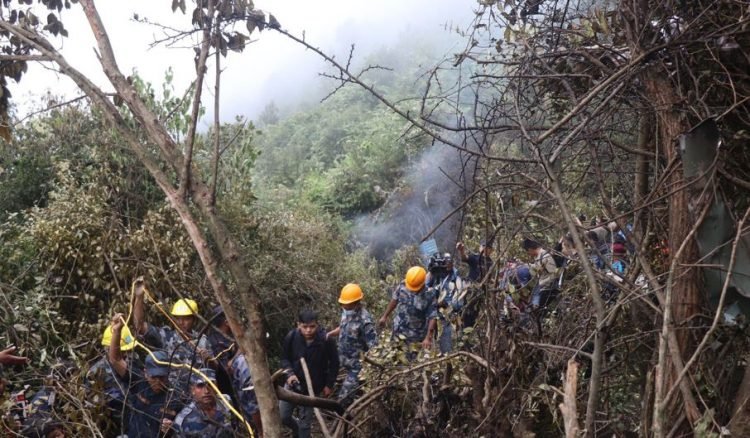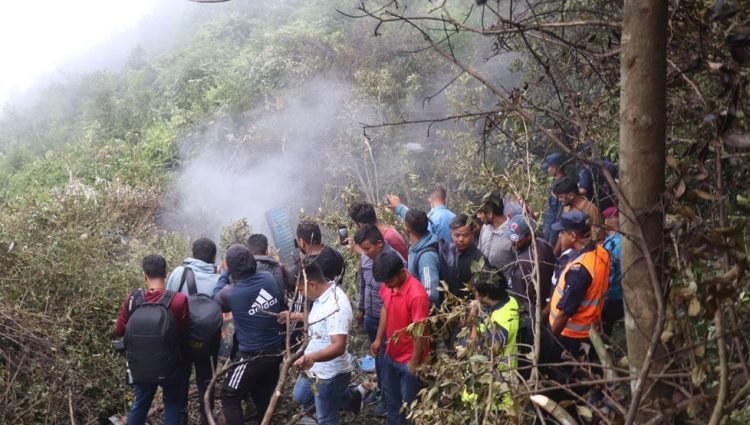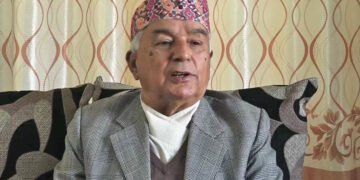Kathmandu, Aug 8: Another aviation accident took place on Wednesday, adding to the growing concern over Nepal’s air safety record. A helicopter operated by Air Dynasty crashed at Suryachaur of Shivapuri Rural Municipality-7 in Nuwakot, killing five people onboard.
The helicopter with the call sign of 9 N-AJD was headed from Kathmandu to Syaphrubeshi in Rasuwa district.
According to the Civil Aviation Authority of Nepal (CAAN), the chopper that took off from the Tribhuvan Airport at 1:54 pm on Wednesday lost contact with the Air Traffic Control (ATC) within three minutes. According to available data, with this accident, 40 helicopters have crashed on different dates in Nepal so far, killing 97 people.

Why do aviation accidents occur again and again?
Aviation expert YK Bhattarai blames many factors like geographical conditions, adverse weather conditions, lack of modern equipment in the aircraft to collect and transmit sufficient information, and not installing useful technology in old model ships for increasing number of aviation accidents.
Other factors that are to blame, according to him, are the lack of coordination between the aircraft (machines), pilots (manpower) and procedures that are directly connected to the airspace.
Moreover, he believes that Nepal still compromises on the investigation and the preparation of the report after aviation accidents, thus further making the matter worse.
Overburdening pilots due to limited workforce and inadequate rest are additional concerns raised by experts.

Nepal’s skies are unsafe: ICAO
The International Civil Aviation Organization (ICAO), an international body of civil aviation, has published a report that ranks Nepal’s skies the most unsafe in the world. Since Nepali skies have been listed unsafe for a long time, European airlines have stopped flying to Nepal.
ICAO argues that Nepal has not met even the minimum standards in eight key areas considered mandatory for aviation safety.
According to the ICAO report, Nepal is 15% weaker than the world average according to a study conducted in 148 countries of the world regarding aviation safety. ICAO’s aviation security report has shown that Nepal’s aviation security has had 58 percent weakness.
Lax implementation of recommendations
In 1949, a plane landed in Nepal for the first time. However, before the completion of the first six years, on March 8, 1955, a Kalinga Air plane crashed at Simara in Bara, killing two people. Since then, there have been around 80 accidents in Nepali skies.
The probe committees have prepared reports for these accidents. However, although the committees have made many recommendations to eliminate technical and human errors in order to prevent accidents, they have not been properly implemented.
So far, the reports made by probe committees regarding aviation accidents have pointed out the negligence of the pilots as the main reason for most of the accidents. They have also suggested that airlines should repair and improve maintenance and technical conditions of aircrafts.





















